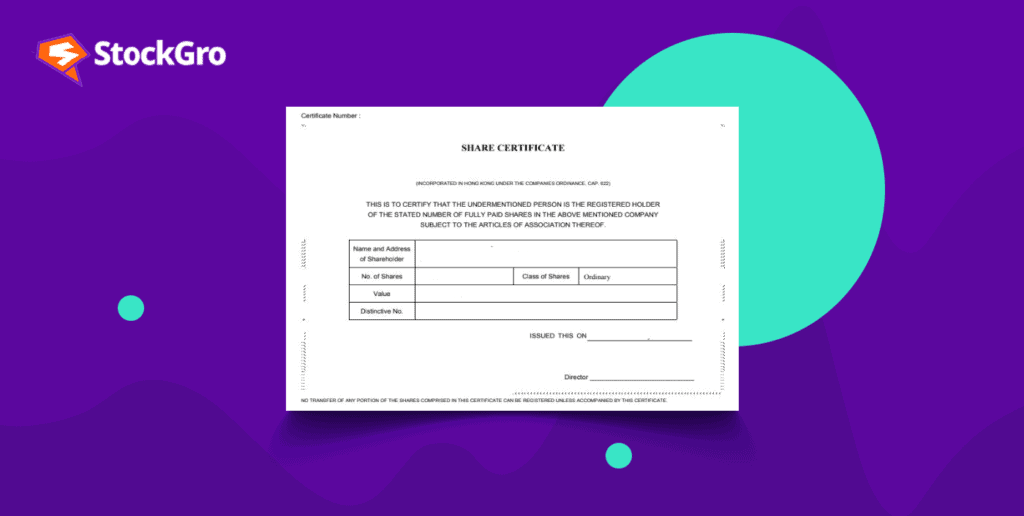
You have probably encountered the word “share capital” on the balance sheet of a public or privately held company at some point. When it comes to liabilities, it comes first. So what is it exactly, and why do businesses have share capital despite being listed as a liability?
We’ll look into that in detail in this article, along with the different types of share capital, like subscribed capital, issue capital, and more. Let’s get started!
You may also like: Working capital – the what, how, and why of business lifelines
Share capital: what is it?
Funds raised through issuing shares for either cash or non-monetary considerations represent share capital. Share capital is necessary for businesses to finance their business activities. With the issue of new shares, the business’s share capital will rise.
There are two categories of share capital: preference share capital and equity share capital. While the former is acquired through the issuance of preference stocks, the latter is created through the fundraising of capital from shareholders. Public offers may be used in the future to change the share capital.
Even when the corporation uses share capital for expansion, the money ultimately belongs to the shareholders. As a result, they have a right to ownership in the business equal to their holding.
Some features of share capital are:
- The only thing that binds shareholders to the company is the face value of their shares.
- Voting rights are exclusively granted to equity shareholders.
- The corporation may occasionally give away bonus shares to its owners to reward them.
- The company’s assets are not charged throughout the share capital issuance process.
- The corporation owns the share capital until it liquidates or ends operations.
Also Read: Understanding authorized share capital
Types of share capital
A company’s share capital can be divided into the following categories from an accounting perspective:
Authorised share capital
All companies must include in their Memorandum of Association the amount of capital they intend to register. This sum is known as nominal, registered, or authorised capital. It is basically the maximum amount of funds a business can raise from a public subscription.
Management frequently does not issue all of the authorised share capital to provide for the potential future issuance of more shares if the firm needs to acquire funds rapidly.
Issued capital
Stocks ultimately sold to and held by stakeholders in a company are known as issued shares. The part of the authorised capital is open for subscription to the public. It is the amount of permitted capital the company is willing to issue at its discretion.
The business is accessible to issue shares whenever it sees fit. Issued capital is limited to the approved capital in each case. It usually refers to all of the shares that have been distributed to suppliers, members of the public, those who have signed the memorandum of association, etc.
On the other hand, ‘unissued capital’ is the term used to describe approved capital that is not tendered for public approval. Usually, it comprises the share of nominal capital that has not yet been distributed. To put it simply, unissued capital is the gap between an organisation’s issued and registered capital.
What is Subscribed Capital?
The portion of issued share capital that a business has favourably obtained subscriptions for from investors is known as subscribed share capital. Put simply, a firm might or might not find investors for all of its shares to raise money.
Financial institutions and large institutional shareholders often make up the subscribers. The total market value of the shares investors have shown interest in is subscribed share capital. A member’s subscription to company shares results in a rise in subscribed capital. Additionally, subscribed share capital must match issued share capital, if not fall short of it. Unsubscribed share capital is the amount of capital remaining after authorised shares have been subscribed.
Example of subscribed capital:
Let’s take an example where XYZ Limited, a corporation, has an authorised capital of ₹100,000, which is divided into shares at a price of ₹10 each. The company is inviting applications for 5,000 shares at a price of ₹10. However, just 3,500 shares were requested in the applications. In this instance, XYZ Limited’s subscribed capital would be 3,500 shares at a price of ₹10.
| Authorised share capital | ₹100,000 |
| Issued share capital | ₹50,000 |
| Subscribed share capital | ₹35,000 |
Called-up share capital
The amount of subscribed capital that a corporation requests payment from its shareholders for is known as called-up capital. A business can instruct shareholders to make payments in instalments rather than requiring payment of the full face value of each share upfront. Interestingly, a business does not pay shareholders the full face value of every share assigned to them. In fact, just a percentage of the total funds the business needs is raised at different stages.
Paid-up share capital
It is the amount that the business pays against the called-up capital. Calls in arrears are payments that the firm has not yet received in full.
Reserve capital
The corporation cannot call this specific capital unless it is winding down or going through a liquidation. By obtaining a 3/4th majority vote in support of a special resolution, a reserve capital can be established.
Issued vs. subscribed capital
The difference between issued and subscribed capital is that issued capital is the actual money that the company has received from the investors, while subscribed capital is the potential money that the company can receive from the investors in the future. Issued and subscribed capital are critical measures of a corporation’s financial strength and market demand for its shares.
Also read: What is issued share capital?
Conclusion
Share capital is a key component of a company’s financial structure and performance. It has advantages and disadvantages for the company as well as its stakeholders. Subscribed capital is one of the types of share capital that shows the market response and expectation for the company’s shares.
However, it is different from the money that the company has in hand. The company must ensure that the subscribed capital is collected and converted into paid-up capital as soon as possible so that it can use it for its business objectives.
FAQs
Can subscribed capital be increased after the company is incorporated?
Yes, a company can increase its subscribed capital after incorporation by issuing additional shares, subject to legal procedures and shareholder approval.
How is subscribed capital calculated?
Subscribed capital is calculated by multiplying the number of shares that investors have agreed to purchase by the nominal value per share.
What happens if a company fails to fully subscribe to its capital?
If a company fails to fully subscribe its capital, it may face insufficient funds for operations and growth, potentially leading to financial instability or inability to meet obligations.
Can the amount of subscribed capital change after the initial subscription?
Yes, the amount of subscribed capital can change after the initial subscription through the issuance of new shares or buybacks, affecting the company’s equity structure.
How does subscribed capital affect a company’s ability to raise funds?
Subscribed capital represents the funds raised from shareholders, directly impacting a company’s equity base and its capacity to secure additional financing or investments.

